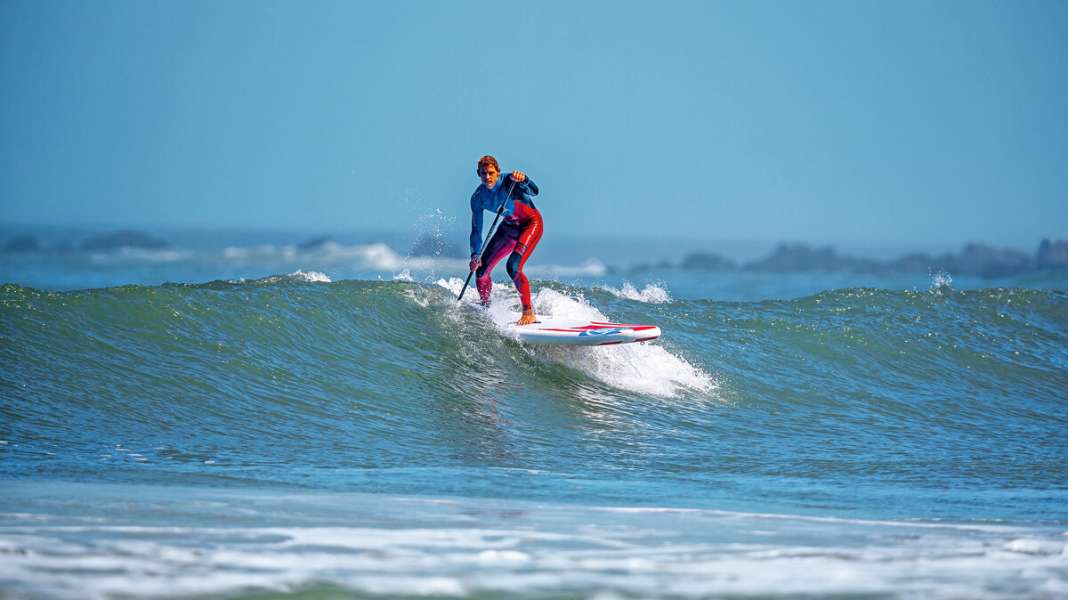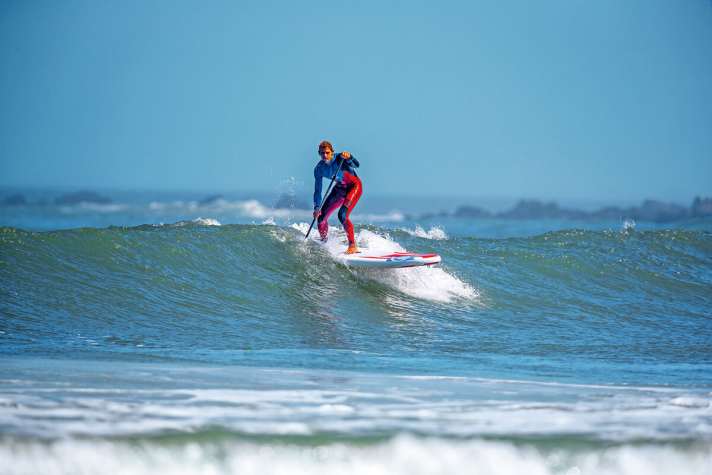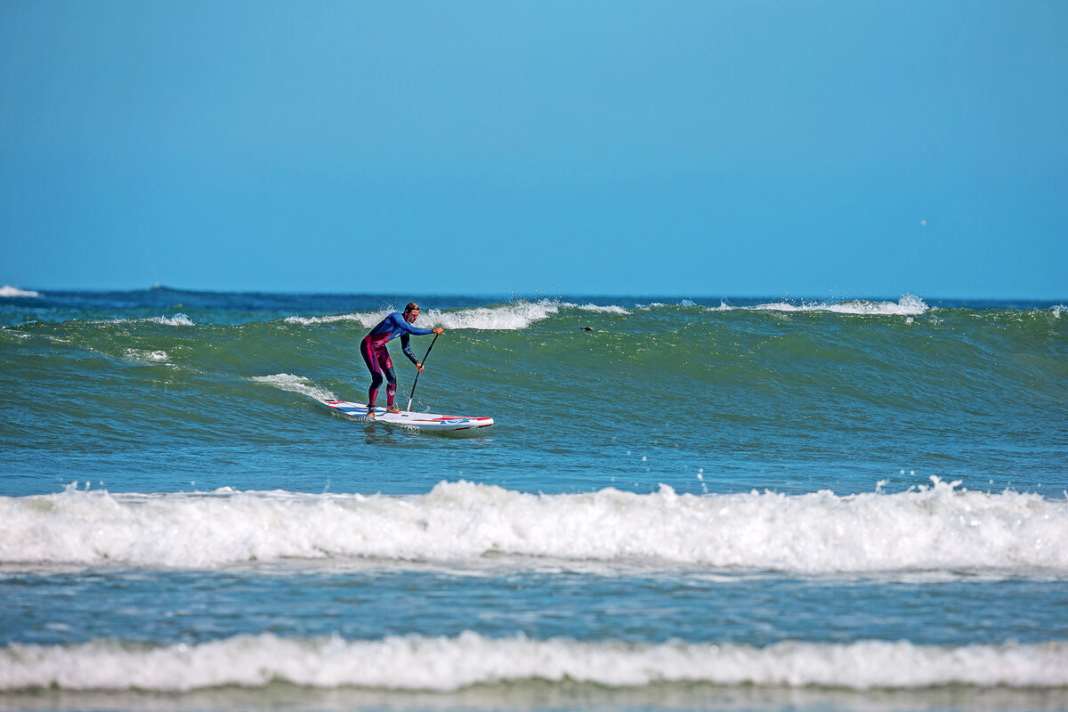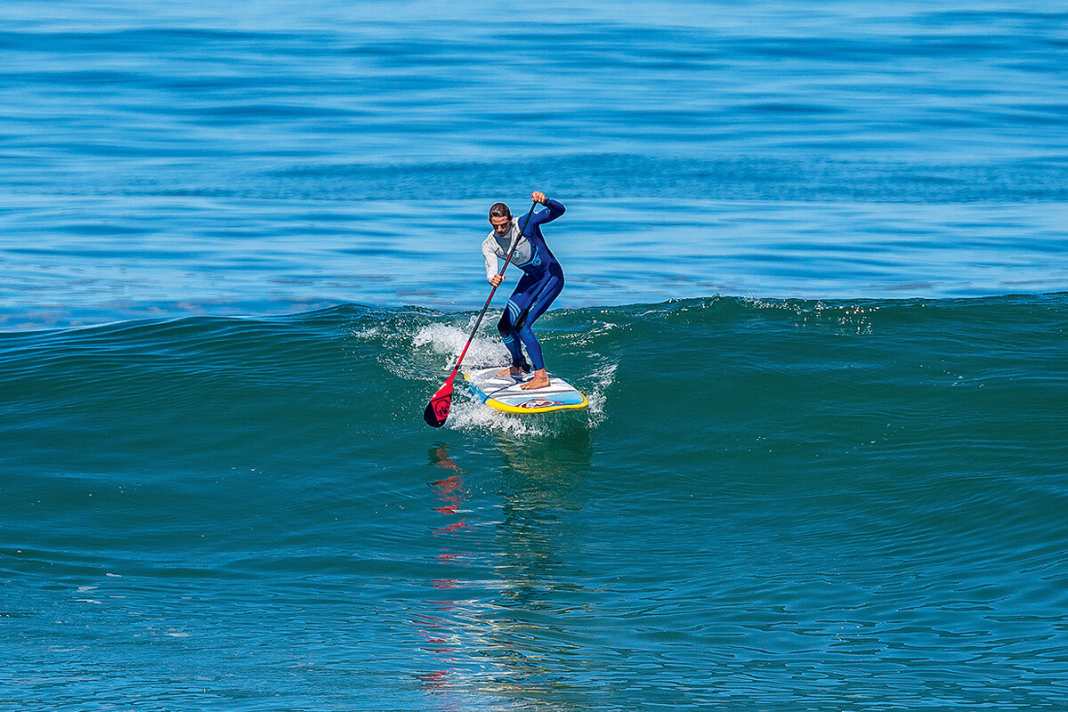

ORIENTATION
If you have made it safely over the surf, you can now tactically position yourself for the next waves. To do this, it is helpful to position yourself slightly behind the impact (breaking) zone and scan the horizon for set waves. If you are too close to the shore, you will often be surprised by an approaching set and washed towards the coast. It is therefore better to wait behind the breaker zone. If there are no waves in sight, it is a good idea to take a short break in a sitting position. It is helpful to fix markers on land, such as a house or a palm tree, to help you orientate yourself in the water. Gradually join the line of waiting surfers until it's your turn to paddle into a wave.
To find the best position for the next wave on crowded days, the tactic is comparable to a game of chess. You have to be two moves ahead in your mind to know where to best position yourself.
TIMING
Good timing is the most important prerequisite for the perfect wave ride. You get this above all through experience and time in the water. The moment a wave builds up, you can often predict from its shape whether it will break close-out (in a straight line) or run at an angle. In addition, set waves usually have three to four larger waves in a row. The first wave is relatively choppy and somewhat smaller. What's more, if you fall, you will be thoroughly washed out by the following waves. It is therefore advisable to take the second or third wave of the set.
As a general rule, you should paddle into these waves too early rather than too late. This will gradually give you a feel for the thrust of the water masses. To find the peak (the steepest point of the wave before it breaks), you have to actively search for it and react flexibly to each wave in the line-up.
PADDLING
You have to build up speed towards the coast with short, powerful paddle strokes. The feet are parallel and point forwards. If the wave thrust accelerates the board, you change your foot position and either stand with your right foot in front (goofy) or with your left foot in front (regular). You then do this individually and automatically. The only important thing is that you put a lot of weight on the tip of the board and position yourself as far forward as possible. This is particularly helpful with long boards to get onto the wave as early as possible.
The moment you head towards the trough of the wave, it's time to shift your weight towards the tail to initiate the turn and surf diagonally to the wave instead of diving into the water with the tip of the board.
Here we show the two alternatives parallel stance and surf stance:






PRINTS
Not everything always goes according to plan and, especially as a beginner, you spend a large part of the session under water instead of above it. Don't worry, that's just part of it. The wash cycle usually only lasts a few seconds. To save air, you should try to relax. It also helps to count to ten internally. The paddle must be held firmly under all circumstances. In the case of larger knockers, you should keep your bearings to avoid falling headfirst onto the reef. The wave loses its swirling effect after a few seconds so that you can quickly reach the surface with a few strokes.
You should avoid these two mistakes when paddling:






